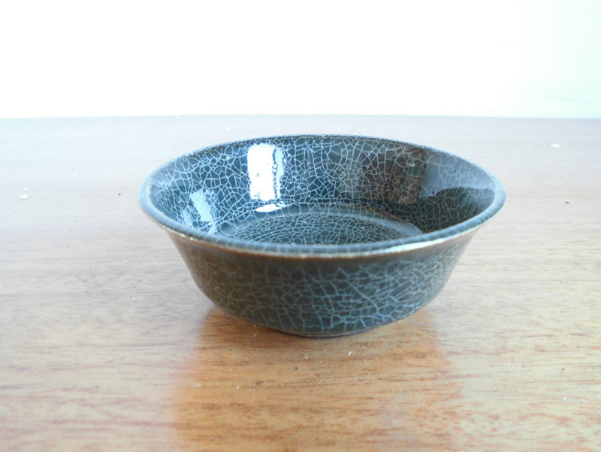Based on differences and similarities of European and Chinese ceramics such as the temperature of firing, the technique of production, and design, it seems appropriate to compare two artifacts of the vessel and the porcelain belonging to Chinese and European ceramics respectively.
The historical path of Chinese ceramics development goes back to several millennia. That period of Song Dynasty was very intense and aimed at improving the quality of the vessel and the glaze and at the search for new forms and artistic techniques (Hetherington 24). Ceramic products of that time directly reflected in their forms the interaction of Chinese culture with other countries such as India, and, perhaps, plenty of others expressed in elements of foreign culture.

For example, the represented vessel resembles the outlines of the Greek amphora or the other exotic specimen (Figure 1). Several spar glazes requiring firing at high temperatures including white, brown, gray, purple, black, and green colors appeared. They were distinguished by high brightness and often imposed spots next to each other giving a colorful effect. The vessel illustrates the pattern of the engraving of reach coating glaze with the help of the thin tool.
Forms of Song Dynasty have an amazing simplicity, tranquility, and steadiness. The greatest achievement in ceramics of that period is perfection, which was used in the decoration of exclusively ceramic opportunities offered by the material (Fang 59). In this connection, the vessel reflects the most simplicity in its form. The significant point is that Song Dynasty ceramics used improved spar glazes purchasing muted color and the richness of the most delicate shades of red, purple as well as the infinite gradation of blue.
The equally essential elements of ceramics of that period that enlivens the shades of glaze are cracks covering the majority of products. Probably appeared by accident as a defect during firing, cracks were diversified into production and used for decorative purposes as one of the methods of the product decoration (“Over 1000 Pieces of Chinese Japanese and European Ceramics and Porcelain” par. 1). For a time of Song Dynasty, in contrast to subsequent periods, a great number of ceramics workshops that existed in almost all the provinces should be noted.
It goes without saying that the porcelain was invented in China. For two centuries, Chinese emperors were the exclusive distributors in the medieval world. However, Chinese ceramics recipe was kept in secret, and Europeans had no choice but open their own recipe of making the porcelain. In 1707-1708, Johann Friedrich Bottger began to conduct experiments on the creation of porcelain that resulted in the creation of the so-called red porcelain (Figure 2).

Bottger’s ceramics got its name only in the XX century. Initially, the raw material was supplied from Dresden neighborhoods (“Blue: Cobalt to Cerulean in Art and Culture” 116). It is assumed that the mixture consisted of a third of the clay mined from the nearby Grosser Garden and two-thirds of the bolus (Prak and Zanden 225). The natural iron oxide was added to give a more intense red-brown shade. Subsequently, the raw material was supplied from other areas.
As a result of the high temperature firing, ceramics with shade from light to dark reddish brown was received (“Philadelphia Museum of Art – Collections” par. 1). The high hardness of the material assumed that it can be treated as glass or precious stones being polished or cut. These methods of surface treatment of the material and its characteristics has led to the fact that porcelain of that time became associated with semi-precious stones that were mined in the area, and his contemporaries gave it the name of the Jaspisporcelain.
First of all, discussed European and Chinese ceramics are distinguished by the temperature of firing. European ceramics contains more kaolin and requires hotter temperatures during firing, namely 1200-1300 C adding some transparency to it. Therefore, European porcelain was painted over the glaze. Eastern ceramics contains less kaolin than European one and fired at less hot temperatures of 800C. It allowed applying a range of colors after the first firing and avoiding a glaze painting.
What is more, there is a difference in the way of the ceramics production. To make the dough plasticity of porcelain, Chinese handymen left it for mature and intensively stirred. Sometimes, the dough was kept for several decades. The vessels were made on a potter’s wheel, but primarily compression-molded or sculpted by hand. At the same time, Europeans made the porcelain from the newly extracted raw material.
In addition, Chinese and European ceramics were under the influence of each other. Plenty of artifacts might be considered as containing elements or references to the other culture. As it was discussed above, Chinese vessel comprises the reference to the Greek culture. It should also be noted that early Bottger’s ceramics and porcelain were Chinese copies of objects.
In conclusion, it should be stressed that the paper discusses the peculiarities of European and Chinese ceramics on the example of two artifacts of Song Dynasty and Bottger’s ceramics. As a result, it was stated that there are such differences between European and Chinese ceramics as the temperature of firing and technique of production as well the similarity of designs.
Works Cited
“Blue: Cobalt to Cerulean in Art and Culture.” Museum of Fine Arts. Boston, MA: 2011. Print.
Fang, Lili. Chinese Ceramics, Cambridge, UK: Cambridge UP, 2011. Print.
“Over 1000 Pieces of Chinese Japanese and European Ceramics and Porcelain.”GUEST & GRAY. Web.
Hetherington, Al. Chinese Ceramic Glazes, Cambridge, UK: Cambridge UP, 2015. Print.
“Philadelphia Museum of Art – Collections.” Philadelphia Museum of Art. Web.
Prak, Maarten Roy, and J. L. Van. Zanden. Technology, Skills and the Pre-modern Economy in the East and the West, Leiden, The Netherlands: Brill, 2013. Print.